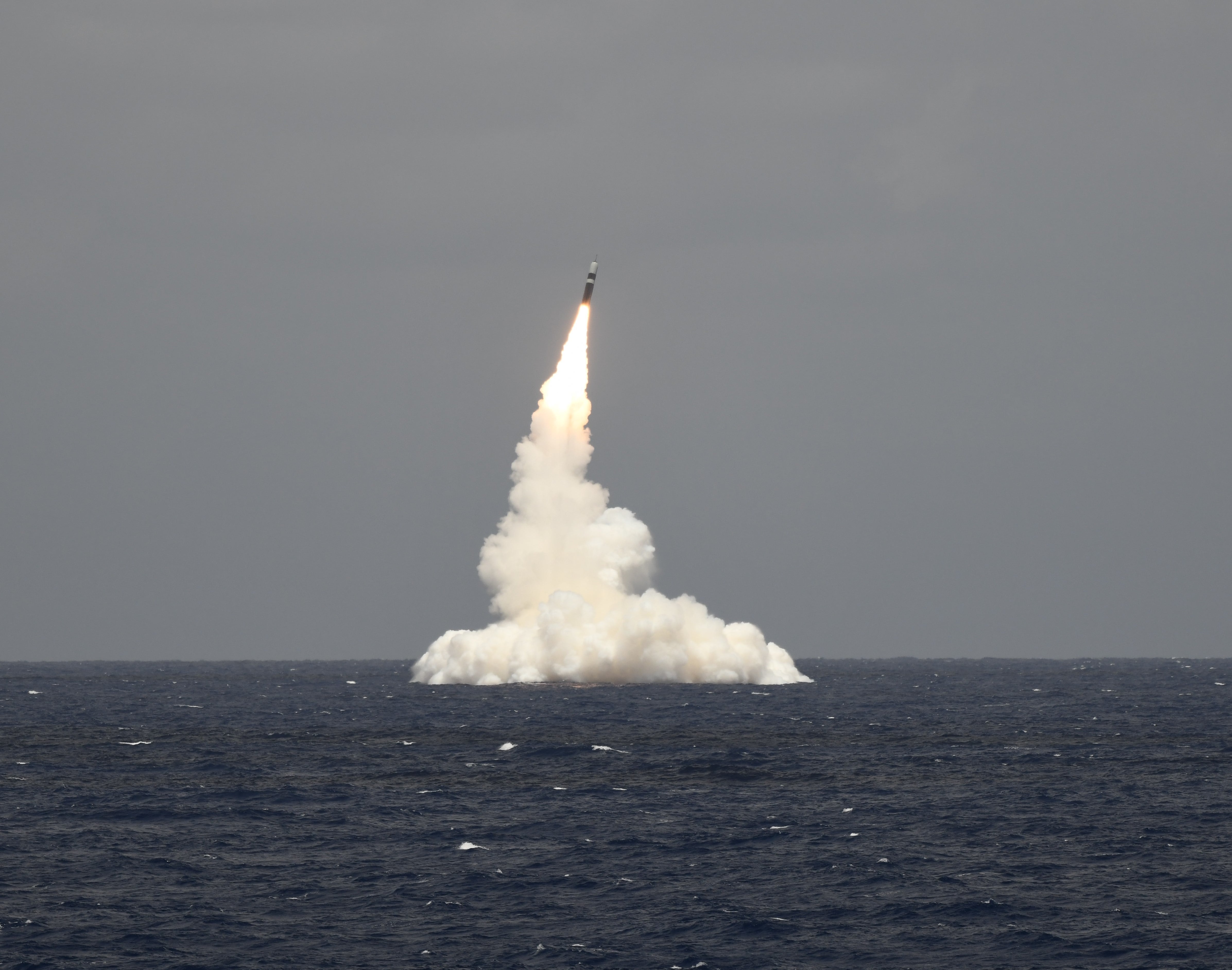WASHINGTON — An aggressive modernization of the U.S. nuclear arsenal must be funded by Congress in the coming years, or the Department of Defense risks losing its strategic capabilities in the long term, a top American general warned Thursday.
“If we do not invest smartly in our nuclear enterprise now, we may begin to reach points of no return,” said Adm. Chas Richard, the head of U.S. Strategic Command. “I predict [that will] start in the nuclear weapons complex, next in the nuclear command and control, and finally in the triad delivery systems.
“When we talk about the modernization of the triad, what we leave out is the ‘or else.’ The other choice is not to keep what we have. The entire triad is reaching the end of its useful life. Either we replace what we have now, or start to divest, almost on a path to disarmament, in the face of this growing threat.”
RELATED

Richard, speaking to members of the House Armed Services Committee’s Strategic Forces Subcommittee about the department’s budget request, also warned that delays in funding key modernization efforts could “result in our need to rebuild, nearly from scratch, over one or more decades, our enterprise talent and infrastructure required to be a nuclear power.”
The Trump administration’s requested roughly $46 billion in funding for nuclear programs in fiscal 2021. That includes $28.9 billion for the DoD, which develops the delivery systems such as the B-21 bomber and the new replacement for intercontinental ballistic missiles, with the rest of the funding coming from the National Nuclear Security Administration, a semiautonomous arm of the Department of Energy which handles development of nuclear warheads.
From FY21 through FY25, the Pentagon projects it will spend at least $87 billion on nuclear modernization efforts. According to a handout from the department, that includes:
- $24.9 billion for the Columbia-class nuclear submarines, with a first strategic patrol planned for FY31.
- $24 billion on investments in nuclear command, control and communications, a broad package that contains a number of smaller initiatives that will be rolled out as they are ready.
- $22.6 billion on the B-21 strategic bomber, with a fielding date around the mid-2020s.
- $13.2 billion on the Ground Based Strategic Deterrent, which will replace the Minuteman III ICBMs, with an FY29 targeted fielding date.
- $2 billion for the cruise missile replacement, known as the Long Range Standoff weapon, with an early 2030s fielding date.
- $480 million for the W93/Mk7 submarine-launched ballistic missile warhead, a new design that is expected to be controversial on Capitol Hill.
- $187 million to make the F-35 fighter jet capable of carrying nuclear weapons, with an initial fielding date of FY24.
- $48 million for the advanced tailkit assembly for the B61-12 nuclear gravity bomb. There is no fielding date listed for that system.
- An unknown amount for a new sea-launched nuclear cruise missile, which is currently undergoing an analysis of alternatives.
Richard noted that the FY21 budget request is “the first time when we have synchronized the Department of Defense’s request along with the NNSA’s” in an attempt to make sure projects come online when expected.
Speaking on condition of anonymity during a recent visit to STRATCOM headquarters in Omaha, Nebraska, officials there identified FY27 through FY35 as the “danger zone” in which all the key nuclear modernization projects will be coming online as their existing legacy programs begin to draw down.
Getting that period right will be critical, the officials said, and delays, whether technical or because of funding issues, could cause a chain reaction that results in tough choices about what can and can’t be modernized.
Given that, are there programs that could safely slip to the right to free up capacity for priorities? Stephen Young, a nuclear expert with the Union of Concerned Scientists, said the need to refresh the submarine fleet is “certainly” real. But he questions whether the need to rush plutonium pit production is as vital, saying they could be updated if needed at a later date after the major costs for the delivery systems have passed.
Young also questions if an ICBM upgrade is needed, as he argues the existing missiles could be refreshed, or the U.S. could instead adopt a dyad model of simply air- and sea-based weapons.
Thursday’s congressional hearing was followed immediately by a classified session. Richard said in the public hearing that he would elaborate on several of his answers behind closed doors. However, early on in the initial hearing, Rep. Mike Turner of Ohio, the ranking Republican on the committee, said if the Pentagon wants Congress and the public to support major spending plans, they need information on the record.
“I just want to make it clear: Telling us in classified session does not help Congress have a debate to be able to conclude budgetary issues. It informs us as to what you know, but the debate on the budget happens in public, and it will be contested,” Turner said.
“So your statements in public are as much as important as the ones you’re going to make in private. In private, you will inform us to make certain we understand the capabilities and issues, but in public that’s where your language, your words, will be entered into our debate.”
Aaron Mehta was deputy editor and senior Pentagon correspondent for Defense News, covering policy, strategy and acquisition at the highest levels of the Defense Department and its international partners.





